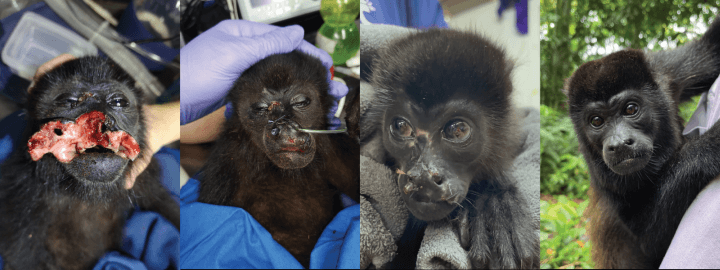21Feb
Biwindi's Remarkable Transformation
We're thrilled to introduce you to Biwindii, a special howler monkey who captured our hearts over a year ago.
In December 2022, Biwindi arrived at the center under critical circumstances. He was a victim of a brutal attack by the alpha of his monkey troop, leaving him with severe injuries, particularly to his face, nose, and mouth. Our incredible team of veterinarians immediately jumped into action.
Despite his wounds, Biwindi showed remarkable strength throughout his rehabilitation process. Our skilled vet team worked tirelessly to reconstruct his face, carefully tending to each injury with precision and care. In addition to his facial wounds, Biwindi also came with scars on his tail and hands.
Biwindi's transformation amazes us every day. His once-injured face now looks better than ever. With each passing by, Biwindi grows stronger and more confident, anticipating the final stage of his journey: rewilding. When Biwindi is ready to be rewilded, he will be taken to La Ceiba, our primary release station. Here, he will adapt to the new environment with the least human interaction possible. This ensures that Biwindi can fully integrate back into the wild, embracing his natural instincts.
Each success story like Biwindi's reaffirms our commitment to conservation and inspires us to continue our efforts to protect and rehabilitate wildlife in need.
